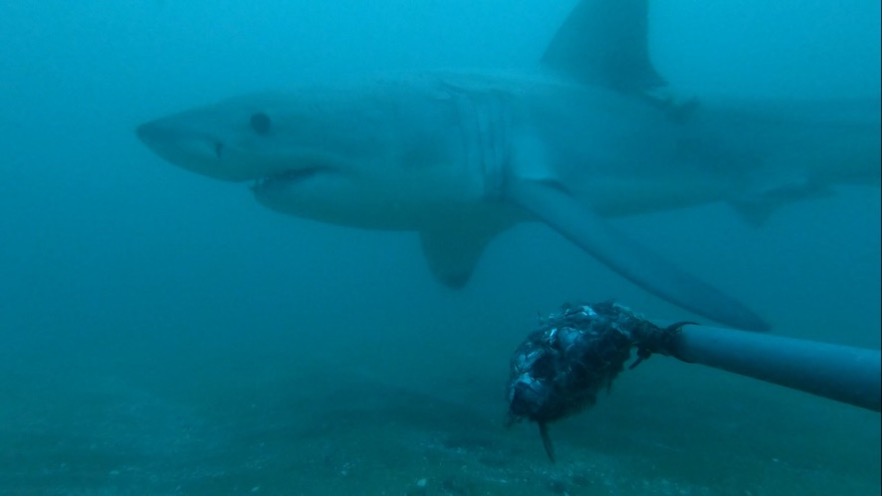In the last week of September this year, a research on sharks and rays taking place in southern Mozambique (Chidenguele) using remote underwater video (BRUVs) recorded a white shark - the first ever recorded in this project that began in 2019 in a partnership between the Oceanographic Institute of Mozambique (InoM, formerly the National Institute for Fisheries Research - IIP) and the Wildlife Conservation Society (WCS). The footage revealed that the shark was carrying an external tag (InnovaSea acoustic transmitter) below its dorsal fin, so the researchers shared a photo of the shark amongst the shark research community in South Africa. Within a few hours, the image was matched to a white shark that had been recorded in an unrelated BRUV survey near Cape Agulhas, and had been tagged in Struisbaai, on South Africa’s Western Cape coast, in May 2022. Distinct facial scars and caudal fin colouration matched, as well as the position of the tag confirming the same individual shark, a juvenile female, in both records.

This represents the first known individual white shark match made using BRUVs, and confirmed a transboundary movement of at least 1,800 km, in just over 4 months. As the animal was carrying an acoustic transmitter, its movement is likely to have been detected by the extensive acoustic receiver network along South Africa’s south and east coasts, managed by the Acoustic Tracking Array Platform (ATAP). A great example of researchers and organizations working together and sharing data.
The BRUV surveys in Mozambique are conducted under a MoU between the Wildlife Conservation Society and the Mozambique Oceanographic Institute, in collaboration with the South African Institute for Aquatic Biodiversity and Ocean Revolution Moçambique, and funded by the Shark Conservation Fund (SCF). The white shark tagging in South Africa is part of a PhD project lead by Alison Towner in collaboration with Rhodes University and the BRUV surveys were conducted in collaboration with Hazmat productions and Discovery Channel.